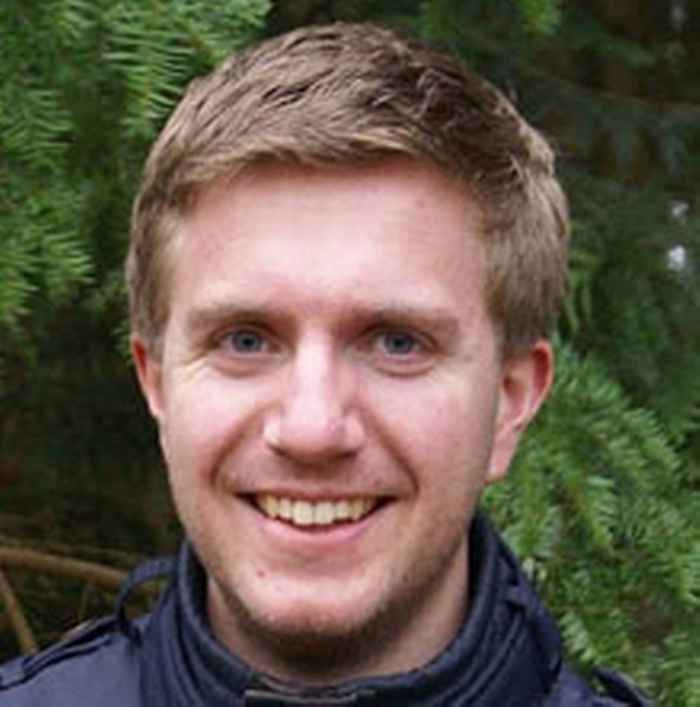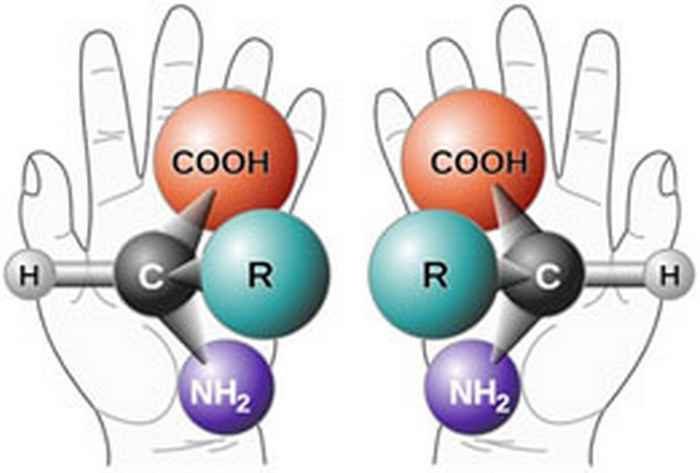Dick Stufkens Prijs 2020 awarded to physical chemist Mark Koenis
Holland Research School of Molecular Chemistry (HRSMC) rewards innovative PhD research on the structure determination of chiral molecules.
15 October 2020

The work of Mark Koenis represents an important step in rendering VCD an easily applicable tool for structure determination of so-called 'chiral' molecules. These are molecules that in their spatial structure can have two forms, which are each other's mirror image. Although the chemical properties of these two variants are almost identical, their biological activity can differ enormously. This is of great importance in the development of medicines. It even happens that one variant is an effective medicine, while the other variant is a poison. Chemists therefore want to be able to determine exactly which chiral variant results from a certain synthesis pathway.
The VCD method can distinguish chiral molecular variants using circularly polarized infrared light. But in practice, this is rather difficult. Under normal circumstances, molecules are always in motion; they wobble, they rotate, and molecule parts can rotate relative to each other. The latter is a problem for VCD analysis. Every shape of the molecule produces a different VCD spectrum, which renders the analysis very difficult. At the end of the previous century, researchers found a way out by comparing VCD measurements with predictions resulting from quantum chemical computer models. This makes it much easier to determine what chiral variant results from a particular synthesis technique. Alas, this method can only be used with relatively simple molecules. And many active ingredients of drugs consist of rather complex molecules.
Algorithm
As a result of the research done by Mark Koenis VCD can now also be routinely applied to complex internally rotating molecules. In his greatly improved approach a genetic algorithm plays an important role. He designed an adaptive system, based on evolutionary principles, that is capable of chiral determination even with complex molecules. But the thesis describes many more striking applications of VCD, combining experimental and calculated VCD spectra. This concerns, for instance, the study of self-assembly of supramolecular polymers, the use of VCD as analytical tool to determine the level of diastereomers, and the use of VCD as a tool for the study of mechanically interlocking molecules (rotaxanes). The work is not limited to VCD. Other spectroscopic techniques have been employed by Koenis in further studies.
The jury of the Dick Stufkens prize was impressed by the quality and the breadth of Koenis' research. That he has greatly advanced the field of VCD applications to structure determination of chiral molecules was another reason for awarding him the prize. In addition, the jury report mentions the way Koenis presents his work in a convincing and engaging manner, which had already earned him well-deserved praise from referees. Because of the excellent quality of other candidates (all received the distinction cum laude) it was a difficult decision, but in the end the jurors unanimously awarded Mark Koenis the Dick Stufkens prize.
The research of Mark Koenis was funded by means of a Technology Area grant of the Dutch Research Foundation NWO to his promotors Wybren Jan Buma (UvA) and Lucas Visscher (VU) and co-promotor Paul Nicu (VU, at the time). It was supported by the companies BioTools (VCD spectrometers) and Software for Chemistry & Materials (SCM, quantum chemistry software with VCD functionality).

Chirality
Chiral molecules exist in two forms (stereoisomers), which are related by mirror symmetry (the name stems from the Greek for hand, referring to the mirror symmetry between left and right hand). Since all chemical properties of the two stereoisomers, called enantiomers, are identical, it is hard to establish which one is present (i.e. determine the absolute configuration). Nevertheless, biological action of the two enantiomers may be very different. Where one is a beneficial drug, the other one can be very harmful. This was dramatically demonstrated in the softenon disaster. Being able to distinguish between enantiomers is therefore extremely important in the pharmaceutical industry.
A very promising technique is vibrational circular dichroïsm (VCD): the absorption of right and left circularly polarized infrared radiation (for vibrational transitions) is different in a chiral molecule, and the differences are exactly opposite in the two enantiomers. This gives different spectra for the two enantiomers. Comparison to quantum chemical VCD calculations is then needed to determine which experimental spectrum belongs to which enantiomer.
When the enantiomers are rigid this works splendidly. But most molecules of interest are not at all rigid, but have many conformers, generated by rotations around single bonds, that are accessible at room temperature. All these conformers will give different VCD spectra. This is a major obstacle in the application of the VCD technique to the determination of absolute configurations.
About the Dick Stufkens Prize
The Dick Stufkens Prize is awarded annually to the best thesis defended in the period July 1 to July 1 of the next year by a PhD student belonging to the Holland Research School of Molecular Chemistry (HRSMC). The prize – first awarded in 2008 - consists of a certificate and an amount of 2000 euro. This year, due to the COVID-19 restrictions, the winner will be asked to present a lecture on his award winning research at next year’s HRSMC Annual Symposium to be held November 2021.
About HRMSC
The Holland Research School of Molecular Chemistry was founded in 1994 and has been re-accredited three times by the Royal Netherlands Academy of Arts and Sciences (KNAW). The Research School combines research groups working on synthesis, spectroscopic characterization and theoretical and computational description of molecular systems from the University of Amsterdam, VU Amsterdam, Leiden University and Radboud University Nijmegen. Apart from creating the appropriate conditions for further collaboration between the participating groups, the school also provides an internationally highly acclaimed teaching program for talented PhD and MSc students in molecular chemistry and physics. The late Prof. Dick Stufkens, scientific director during the period 1997-2001, was one of the driving forces behind the HRSMC. Among other things, his efforts have contributed greatly to the international reputation of the HRSMC.